While I was updating my Subtraction Fact Mental Strategy Count Up To Free Sample, I began thinking about concrete ways to introduce this subtraction fact strategy. I also started to realize that children who view subtraction as only meaning to take away would have a difficult time conceptualizing this strategy. (Never fear, after I get off my soapbox, there will be a link to another subtraction freebie below!)
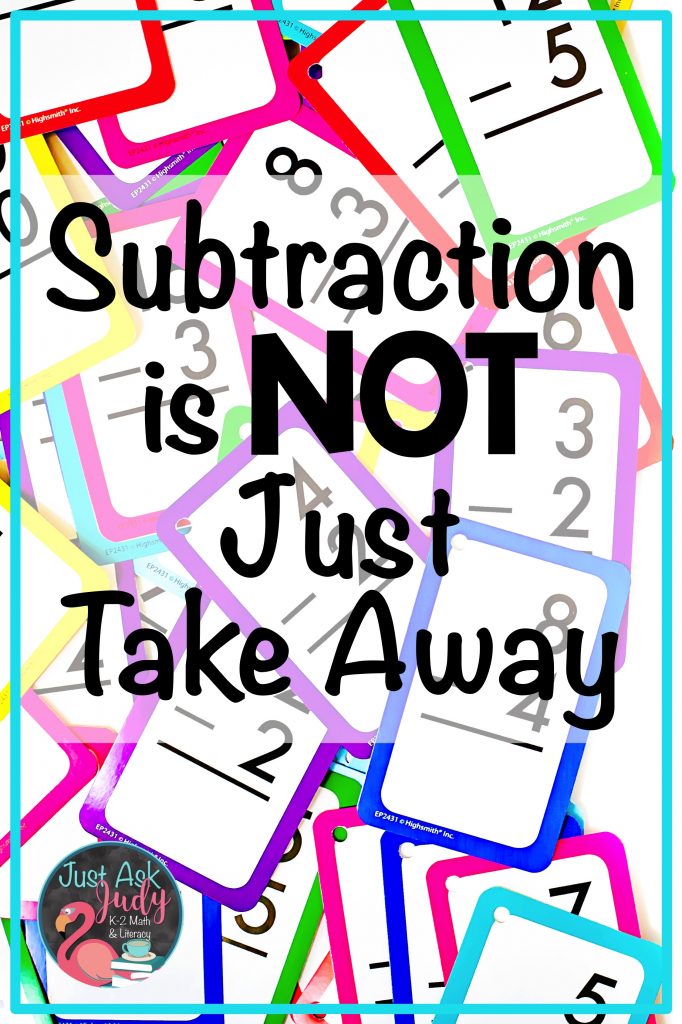
Background Information
It’s so easy to get stuck in a rut teaching subtraction as take away. We know addition involves joining quantities together. So why isn’t subtraction simply taking quantities away? Just to complicate everything, subtraction takes three forms. These forms are taking away, comparing, and finding a missing addend or part of a whole. When a second grader reads 7-4 as 7 take away 4 rather than 7 minus/ subtract 4, I know we will have a lot of work ahead. It will be necessary to rebuild a foundational understanding of subtraction.
The concept of comparing to find the difference between two quantities can be introduced in kindergarten. Two groups of children can line up facing each other and grasp hands (think London Bridge). They will readily see/ count the difference between the two groups. This type of activity can be repeated many times with a wide variety of objects over an extended period of time.
Finding the Difference
Teddy Bear Ten Strips is a free download which can be found in my post How to Teach the Concepts of More and Less. It can also be used to find the difference between two quantities, using small manipulatives. These types of activities help build an understanding of subtraction as comparing quantities. As a bonus, this will also lead to interpreting data in graphs by answering how many more/ fewer questions, a first-grade standard.
Introducing the Count Up To Subtraction Fact Strategy
Practicing the Count Up To Subtraction Fact Strategy
When they understand this concept, they’re ready to move on to the Count Up To subtraction fact strategy. I typically prefer vertical number lines. But for this activity, a horizontal one made more sense. I wanted to stick with the idea of numbers or houses in a neighborhood since it is a part of my anchor wall chart for this strategy. This provides a consistent visual cue.
The number line is limited to those numbers that would be used for this strategy. I did this to increase associations between the strategy and the numbers. I created number line houses 2 through 12 for group instruction and a number line strip with houses 4 through 12 for individual student use. The facts 3-2 and 4-3 can be solved by either counting down or counting up to. A number line from 4 through 12 covers the remaining basic subtraction facts for which this strategy is applicable.
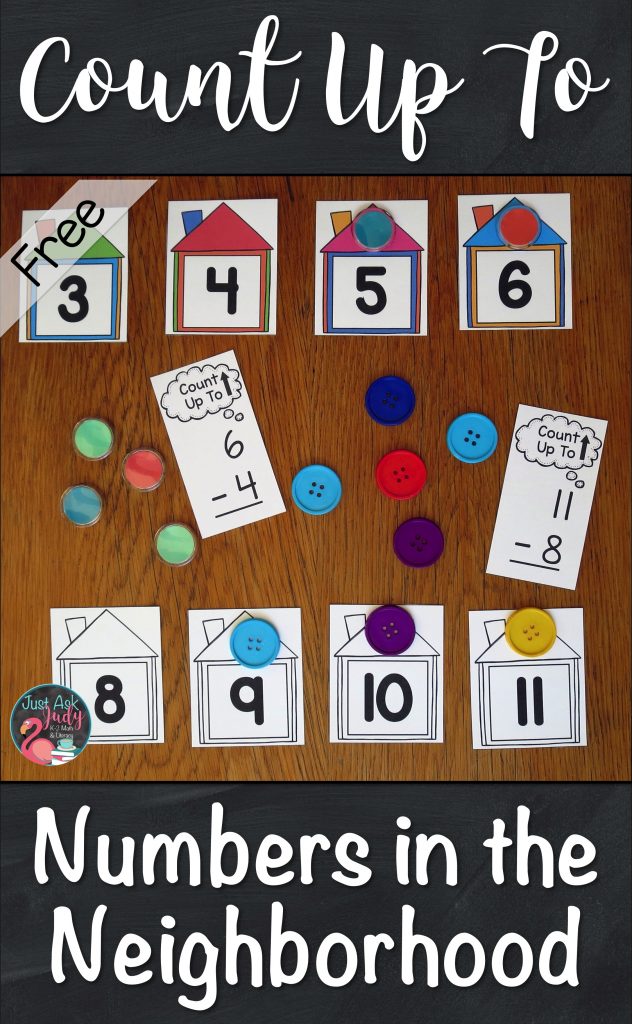
How to Prepare:
Simply print the houses in color or black/ gray/ white on paper or card stock. Laminate, if desired, and cut.
Likewise, print the number line and counting strips in color or black/ gray/ white on paper or cardstock. Laminate and cut in strips.
Use any suitably sized counters.
Ways to Practice:
Place the houses in order on the carpet, a table, or a chalk/ whiteboard. Present a Count Up To basic subtraction fact with a difference of 1, 2, or 3, such as 9 – 6.
Model using counters (or button magnets on a board) how to keep 6, the lower number in your head and count up to 9, the higher number. Students can now easily visualize the difference between the two numbers!
As with the Count Up strategy for addition, you will have to find ways to keep your students from counting the number they start with. While you are modeling and practicing the process, be sure to emphasize you are finding the difference between the two numbers.
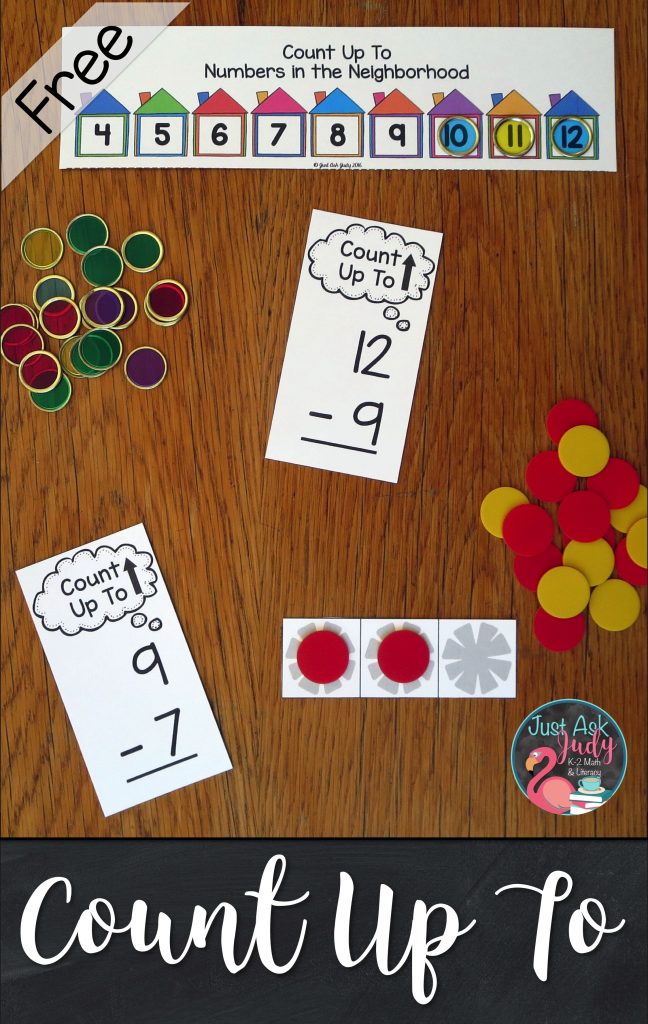
When they are ready, students can use their own number line strips to practice. Only give them three counters as this strategy is best used with a difference of 1, 2, or 3. I have also included a three counter strip that can be used as a bridge to mental fluency, instead of using fingers. Just say the lower number. Then, place counters as you count up to the higher number.
Students who understand and apply the Count Up To strategy for basic facts will also be able to apply it to multi-digit subtraction.
Enjoy these Numbers in the Neighborhood number lines for introducing and practicing the Count Up To subtraction fact strategy! Click on the highlighted words to download your free copy.
More Subtraction Resources
The flashcards, an anchor wall chart, and two worksheets can be found in my Count Up To Free Sample. It may be downloaded from my TpT store.
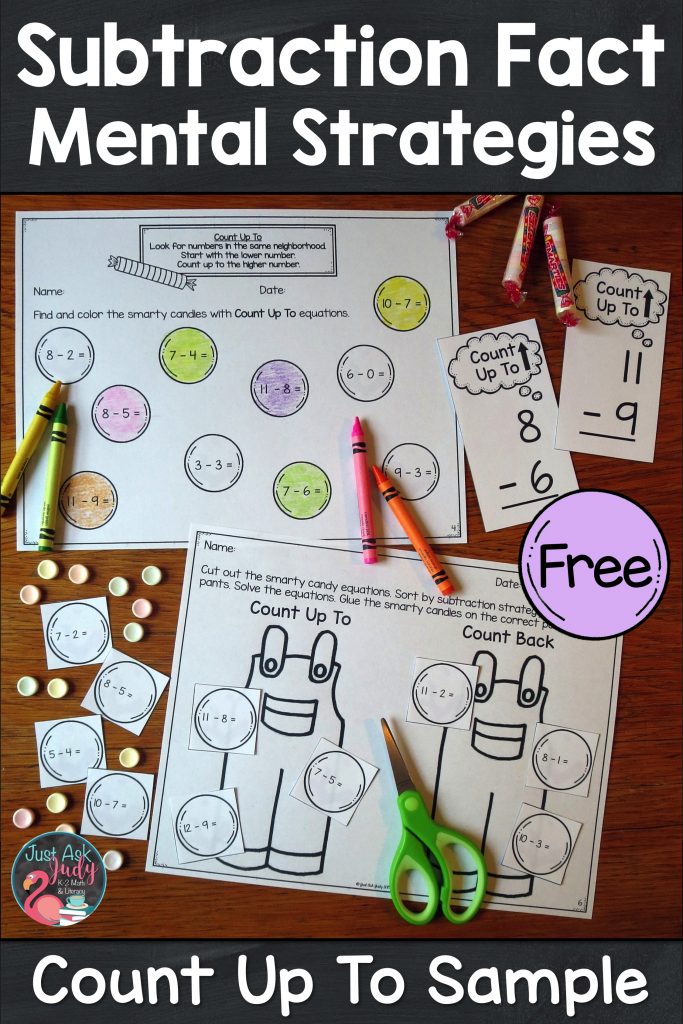
The newest edition (July 2018) of my subtraction fact strategy anchor charts, flashcards, and worksheets include options for both Count Down and Count Back. You can choose the best one for you and your students. The strategies covered are Subtract Zero, Subtract All, Count Down/ Count Back, Count Up To, Doubles, Make 10, Bridge With 10, Subtract 10, Subtract 9, and Subtract 8. These resources are available individually or as a bundle.
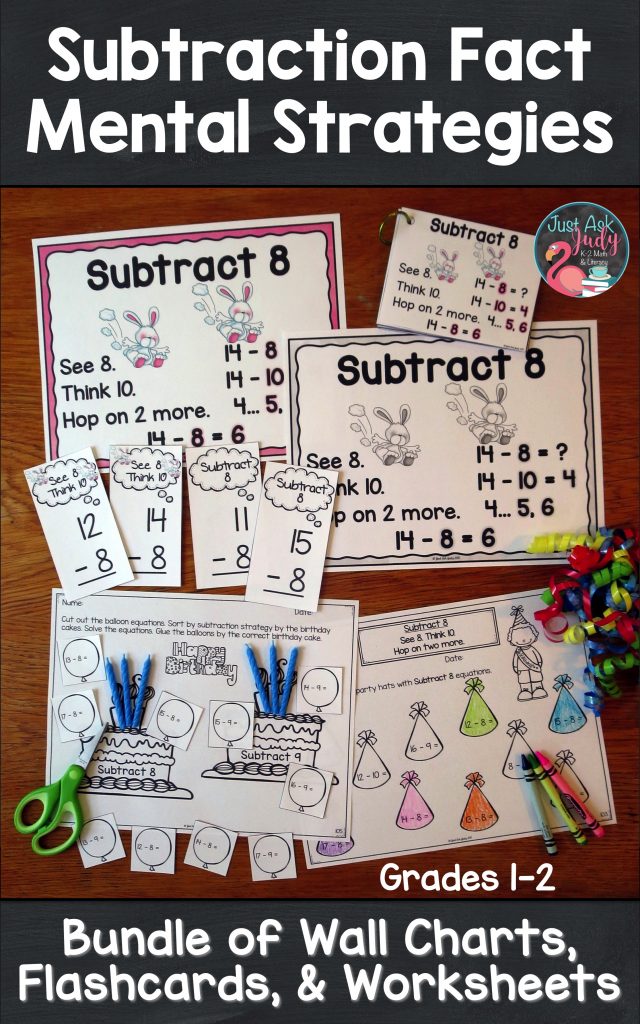
More Subtraction Fact Strategy Blog Posts
- Free Fun With Popping Doubles for Subtraction
- 1 Winning Way to Introduce the Count Down Strategy
- How to Start Teaching Subtract All and Subtract None
Subtraction flashcard photo is by Classroom Clicks.

Great ideas. I never thought of the difference between "take away" and "minus/subtract." I always tell them to use minus or subtract because "take away" is for little kids. Now I have a better reason.